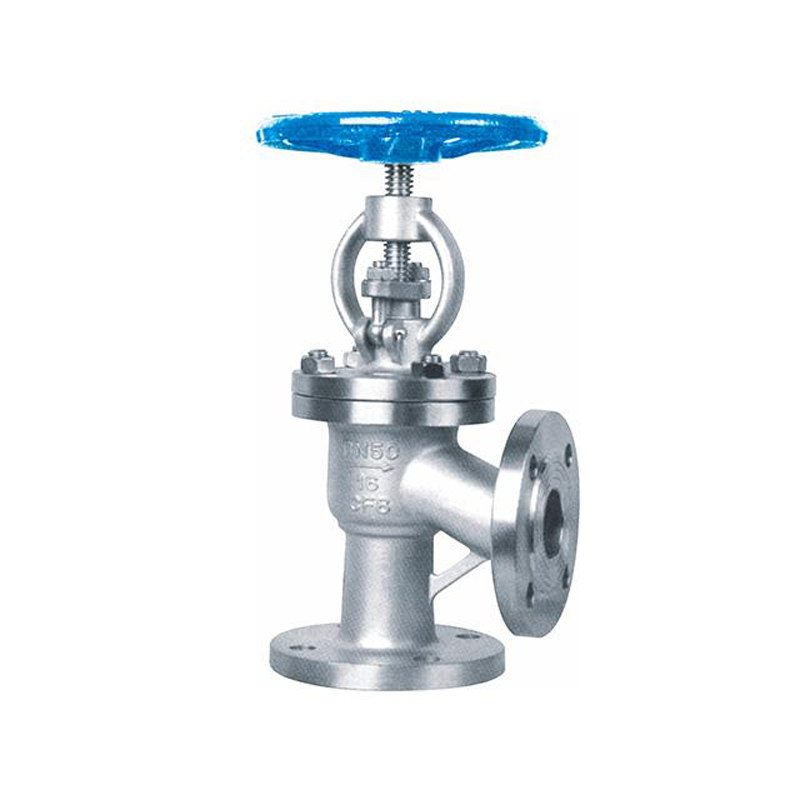Tel : +86-18059296519
Whatsapp : +8618059296519
Email : [email protected]
Angle-type globe valves are widely used in piping systems to regulate the flow of fluids or gases. This ultimate guide provides an in-depth overview of angle-type globe valves, including their design, applications, and operation. You will learn about the different types of angle-type globe valves, their advantages and features, and how to select the right valve for your specific needs.
Angle-type globe valves can be found in many industries, including petrochemicals, shipbuilding, and pharmaceuticals. Furthermore, they’re often found in cooling water systems or fuel oil systems to regulate medium flow.
These valves are built for high-pressure environments and can handle a range of temperatures and pressures. Made of materials like cast iron or stainless steel, they’re designed for optimal performance in high-pressure settings. Let’s take a detailed look and determine which one is the best for you.
What Is an Angle Type Globe Valve?
An angle-type globe valve is a modification of traditional globe valves featuring right-angled intake and exit ports to enable reduced pressure drop when installed at pipe changes.
An angle-type globe valve is a modification to a Z-body globe valve in which its diaphragm (the basic glove) can move at right angles to its pipe axis, offering more efficient use by only needing one elbow instead of two.
The valve has a globe-shaped body with a movable disk or plugs that can be raised or lowered to control the flow of fluid through the valve. The angle between the inlet and outlet ports creates a change in the direction of the fluid flow, which can help to reduce pressure drop and minimize turbulence.
Globe valves are mechanical control valves used to regulate flow and pressure. Available in various styles and forms, globe valves have many potential applications in regulating both.
Angle globe valves feature an innovative design that enables smaller pressure drops than standard pattern globe valves and requires fewer fittings for installation.
Y-Pattern angle type globe valves are variations on standard Z-body globe valves with their seats and stem angled at approximately 45 degrees, creating a straighter fluid path and decreasing pressure loss.
A Y-pattern globe valve seat may be composed of either soft or metallic material depending on its application and temperature range; soft-seated seats typically serve low-temperature systems up to 60deg C, while metallic seats are utilized at higher temperatures beyond this threshold.
Straight-Through angle type globe valves can switch the flow direction by 90 degrees without using an elbow or an extra pipe weld, as well as offering lower pressure drops than standard globe valves. They’re especially well suited for applications involving intermittent flow because of their ability to control their pulsing effects without becoming stuck open or closing over time.
Angle valves should typically be installed so that their outlet pipe points downward, thus reducing the likelihood of fluid clogging or corrosion over time.
Right-Angle angle globe valves are versatile devices used in numerous industries, including shipbuilding, petrochemicals, and pharmaceuticals, to regulate flow and pressure in pipelines.
This type of valve features a spherical body with two ports connected by a passageway, enabling fluids to freely pass between both ports when opened.
Direct-Flow angle-type globe valves feature linear motion disks for controlling fluid flow. Their seat opening varies proportionally with disc travel, making this an excellent solution for tasks requiring flow management.
These linear motion globe valves are an excellent solution for steam and condensate service, temperature or pressure regulation in pipelines, and nuclear plant process control and offer high degrees of shutoff capability.
Applications of angle-type globe valve
Angle-type globe valves are widely used in various industries where there is a need for precise flow control of liquids or gases. Here are some of the applications of angle-type globe valves:
Angle-type globe valves are used to regulate fluid flows within pipelines. Their advantages include easy assembly, effective sealing, superb performance, and attractive aesthetics.
This valve comes in various disk designs, such as ball disk, composition disk, and plug disk. Ball designs are most frequently employed in low-pressure/low-temperature applications.
Angle globe valves offer many benefits and features that are hard to beat. Their simple construction, effective sealing, high-performance capabilities, and great aesthetic make for an all-around effective product.
This type of valve can be utilized in various settings, including cooling water systems, fuel oil systems, and chemical, air, and lube oil lubricant applications. It is often chosen due to its ability to withstand an array of pressures and temperatures.
Angle-type globe valves are versatile valves with multiple uses and benefits, one such feature being effective sealing.
A valve is comprised of a spherical body fitted with an internal baffle and featuring a threaded hole at its center that serves as a seat on which a plug can be screwed to close or shut off the valve.
Angle-type globe valves boast many advantages and benefits. They’re easy to use, effective, and can withstand various pressure levels without becoming leaky over time.
Angle pattern designs enable media flow to make a single 90-degree turn without needing an elbow or additional welds, thus eliminating pipe elbows and decreasing resistance to flow.
Angle-Type Globe Valves for Applications and Benefits Angle-type globe valves boast an eye-catching appearance. They can easily fit in various pipe sizes and offer various pressure classes.
Angle valves offer a distinct advantage in that they can effectively manage fluctuating flow conditions that cause slugging. This feature makes angle valves an invaluable solution, as it prevents pipe issues that arise with other valves.
